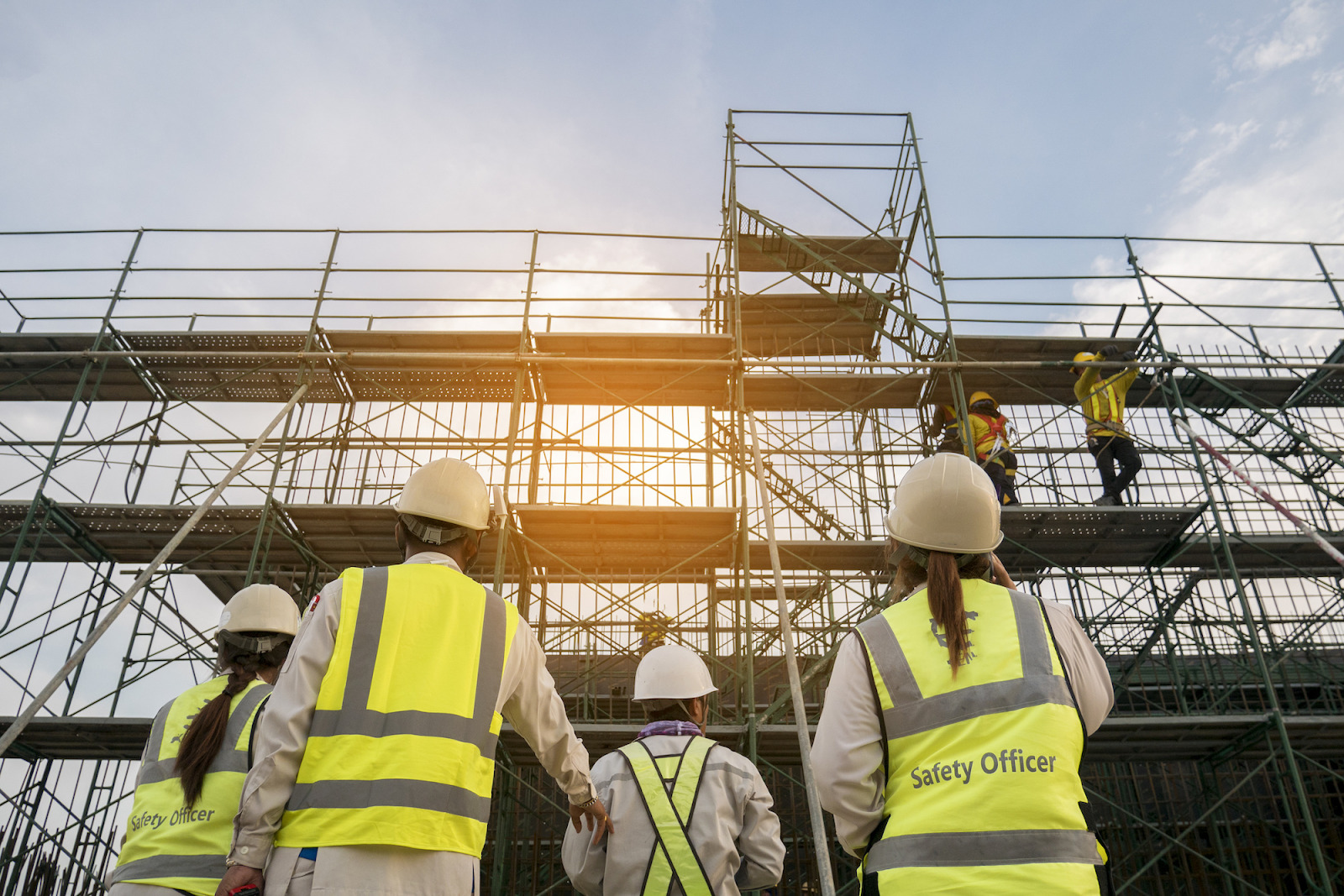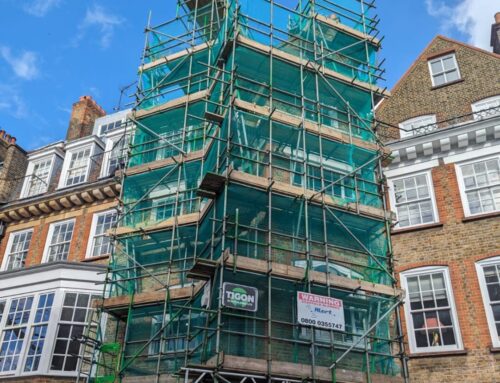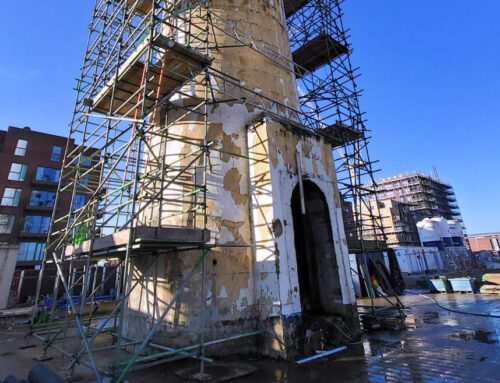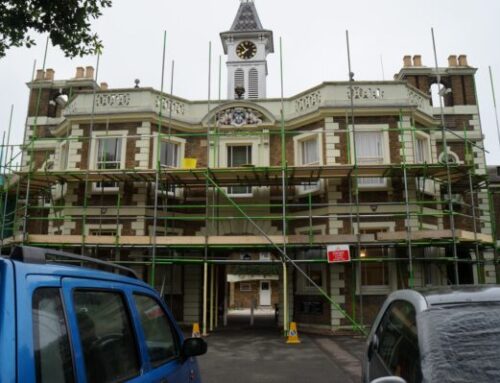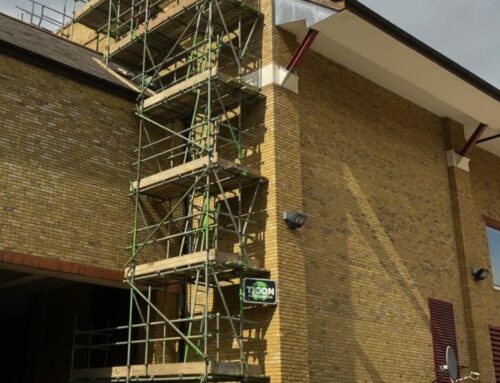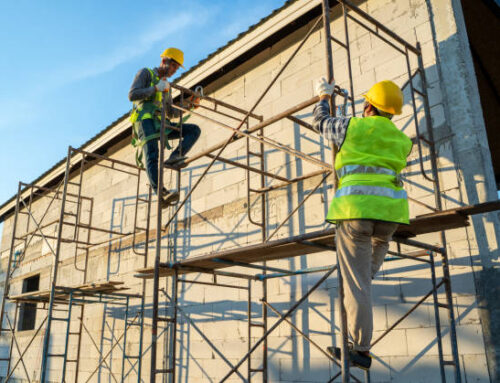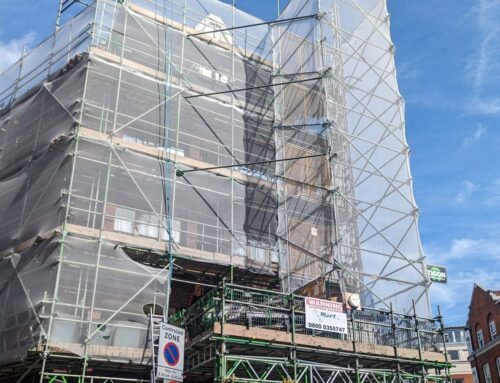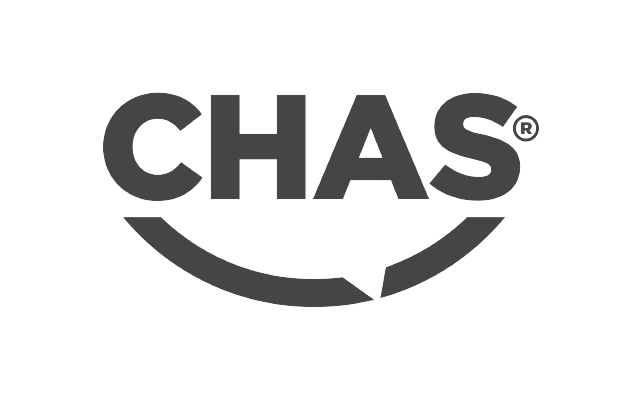Here at Tigon Scaffolding, we understand the importance of having a high-quality, cost-effective service that follows the proper procedures when it comes to reliability and safety.
We also understand that our clients may not know the purpose of scaffolding inspections and why we need them.
That is why we have chosen to write this blog and hopefully make it a little clearer.
First of all, what is a scaffolding inspection?
A scaffolding inspection is a careful examination of any erected scaffolding. It is there to ensure that it is safe to work on for both the safety of the construction workers and also passers-by.
Scaffolding inspections are the process of assessing the safety and stability of a scaffold before, during, and after the construction project. The purpose of the inspection is to identify any defects or faults in the structure that could lead to an accident or collapse. Scaffolding inspections should be conducted by a qualified professional who understands the latest regulations and standards for safe scaffolding operations.
The primary focus of the inspection is to ensure the construction crew is using the correct type of scaffold for each task, that all components are properly assembled, and that the workers have the proper safety equipment. In addition, it may also check for uneven surfaces or soft ground which could weaken the stability of the scaffold. Any damaged pieces or loose connections need to be fixed before the work begins.
An inspection should always be completed after it is installed and before being used so that you can confirm that it is safe to work on.
It is important that inspections are made weekly after the first initial one to maintain the highest level of safety for all parties. This is also in place in case there are any circumstances that might threaten the safety of the scaffolding, such as extreme weather conditions. If these conditions arise then the scaffolding should be inspected right away even if there was an inspection less than a week ago.
It is important to have regular scaffolding inspections as the structure may be subject to movement and deterioration over time due to the elements, vibrations from the surrounding environment, or even wear and tear from the workers. Regular inspections can help ensure the safety of the team at all times. Additionally, if any new regulations are brought in regarding the use of scaffolds, it’s important that these are taken into account during the inspection process so that any necessary changes can be made immediately.
Following each inspection, a report should be written up and kept on site until the work is completed so that everyone working on the site knows when the last inspection was.
The key details that the report should include are:
- The name and address of the person that carried out the inspection
- The name and position of the person who carried out the inspection
- The location, date and time of the inspection
- A description of the place of work and where the work equipment was inspected
- Any details of any defects or any potential risks that have been identified and if there was any action that was taken to remedy this
- Any details of any further action that is considered necessary
Overall, scaffolding inspections are an essential part of ensuring the safety of workers on construction sites. They provide peace of mind that everything is being done correctly and reduce the risk of potential accidents or collapses occurring due to negligence. It is the responsibility of everyone involved in the construction process to ensure the scaffolding is properly inspected at all times.
What is the purpose of scaffolding inspections?
Scaffolding inspections are vital in the construction industry, as they ensure the safety of the structure. A scaffolding inspection is an assessment that is used to identify the general condition of the scaffold and its components, thus providing the user with an overview of the structure’s strength, stability and overall level of safety.
It is important to note that the inspector should be specifically trained in the inspection of scaffolding, as the complexity of the structure can vary greatly from one project to the next.
Scaffolding inspections are necessary for a variety of reasons.
- First and foremost, they help ensure the structural integrity and safety of the scaffold. A thorough inspection will reveal any potential risks or hazards that could lead to an injury or accident on the job site.
- Inspections can also identify the damage or wear-and-tear caused by use over time so that any necessary repairs or replacements can be made before further damage occurs.
- Additionally, scaffolding inspections can provide insight into the performance and efficacy of the scaffold itself, helping to determine if it is being used correctly and providing the user with reassurance that the structure is safe and secure.
These inspections are essential in the construction industry, helping to minimise the risk of accidents or injuries on the job site while also providing users with peace of mind that their scaffolding is up to standard.
Regular inspections help guarantee that the scaffold remains in good condition throughout its lifespan, promoting a safe working environment for all.
Why do we need scaffolding inspections?
The purpose of the inspections is to ensure the safety of the scaffolding structure and the workers who use it. Scaffolding inspections are a vital part of the job in order to prevent accidents from occurring or causing any potential damages.
Scaffolding inspections are especially important when the scaffolding is used for high-risk activities such as working at extreme heights, lifting heavy materials, or accessing spaces that require special attention. In these cases, an inspector should be on hand to check the condition of the equipment and make sure that all safety measures are being followed correctly. Additionally, regular inspections can help detect any signs of wear or damage that could become hazardous if left unchecked.
An example of when scaffolding inspection may be necessary is when the scaffolding is being used to lift heavy materials. An inspector should be present at the beginning of the job to ensure that the supporting structures are secure and the workers are using the correct safety equipment. The inspector may also check the condition of the scaffolding, wires, and ropes throughout the job as an added precautionary measure.
Inspections can also be done after a storm or other unexpected event in order to make sure that the structure has not been weakened by the weather conditions. In addition, inspections should occur before major events such as festivals or concerts where large crowds will be gathered around the scaffolding structure for extended periods of time. By conducting regular inspections, we can help mitigate any potential risks involved with using the scaffolding.
Scaffolding inspections are an important part of the job in order to protect the safety of the workers and the integrity of the scaffolding structure. Regular inspections can help detect any potential risks or damages before they become hazardous, thereby reducing the risk of accidents occurring. By ensuring that the right procedures are being followed, we can ensure that the scaffold is safe for use and help protect the people who use it.
As a result, scaffolding inspections are a critical component of any construction project to ensure safety and quality standards are met. Without these regular checks, workers may face serious risks such as falls from height or structural damage due to wear and tear. With adequate inspection processes in place, these risks can be minimised, resulting in a safer and more efficient working environment.
By conducting the necessary inspections, we can help ensure the safety of the workers and the integrity of the scaffolding structure. Regularly inspecting the scaffolding will help detect any potential risks or damages before they become hazardous, leading to fewer incidents and improved worker safety. Therefore, it is essential that proper inspection processes are in place for every construction project to ensure the safety of both the workers and the structure itself.
By following the right procedures and conducting regular inspections, we can help protect the people who use scaffolding structures while also ensuring that the structure remains secure and safe for use. In this way, scaffold inspections play an important role in guaranteeing workplace safety and the well-being of the people who use the equipment.
Scaffolding inspections are an important part of the job in order to ensure the safety and quality of the structure, as well as the safety of the workers who use it. By following the right procedures and conducting regular inspections, we can help protect the people who use scaffolding structures while also ensuring that the structure remains secure and safe for use. In this way, scaffold inspections play an important role in guaranteeing workplace safety and the well-being of the people who use the equipment.
This falls under the responsibility of the scaffold users / those hiring the scaffolding; therefore, it is important that you understand how scaffolding inspections work to ensure the safety of your workers and the compliance of your construction project.
Who must carry out a scaffolding inspection?
According to HSE guidance, scaffolding inspections should be carried out by ‘a competent person whose combination of knowledge, training and experience is appropriate for the type and complexity of the scaffold.’
In most cases, scaffolding inspections are part of the service provided by scaffold erectors/companies; however, when this is not the case you can hire an independent inspection service or train one of your workers to fill that position.
A non-scaffolder who has attended a CISRS scaffold inspection course could be deemed competent to inspect a basic scaffold structure; however, a more complex structure should be inspected by a CISRS Advanced Scaffold Inspection card holder. Scaffolders holding the appropriate level of CISRS qualification are also permitted to inspect scaffolding.
Thank you for taking the time to read this blog on the purpose of scaffolding inspections and why we need them. We hope that it has helped you in understanding the importance of scaffolding inspections for any project. If you have any more questions about anything we have discussed in this blog, head on over to our website and we can tell you more about it.
Learn about Ancient Scaffolding Techniques here!
Learn more about our scaffolding in…


